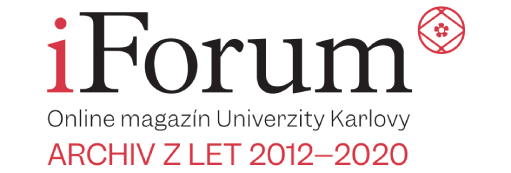14. března 2013
Projev rektora UK prof. Václava Hampla na konferenci Gemeinsame Tagung der tschechischen, österreichischen und deutschen Wissenschaftsarchive in Prag
Your Magnificence Rector Schücking,
Dear colleagues, dear guests,
In my office, I don’t often have the opportunity to meet with archivists and historians, keepers of the written records of our past who interpret these sources and present the results of their research to colleagues and broader public. That is why I warmly welcome the opportunity to be present at the opening of a meeting of Czech, German, and Austrian archivists who look after source materials pertaining to the history of Central European universities and thus maintain the memory of their institutions, which, taken together, form part of the shared heritage of Central Europe.
Alma mater, or Alma mater studiorum, is a traditional metaphorical designation of universities which educate students who eventually become their alumni. The use of metaphors, though part of the usual set of tools used by historians in their interpretative work, can be in some contexts inaccurate and sometimes even misleading. So, for example, the Prague alma mater has not always been a loving mother to its students and teachers. During the tense period of social and moral crisis and upheaval of late fourteenth and early fifteenth century, the Prague university, previously a truly universal European institution, was dragged into political and ideological controversies, which culminated in the king’s intervention in its structure and principles of its functioning. One of the consequences of the so-called Decree of Kutná Hora, which Wenceslas IV issued in 1409, was the departure of a large number of scholars who no longer felt like the sons of this alma mater. Something similar can be said of the relation between the Prague university and a newly established university in Leipzig, which was at that time – and for a long time to come – rightly seen as not maternal at all. The departure of a significant part of the Prague academic community and the creation of a new university in Leipzig led to an immediate as well as future drain of enormous human and intellectual potential. At the time of its ‘birth’, the Leipzig ‘daughter’ was thus by its abandoned Prague ‘mother’ quite naturally seen rather as an unwanted child.
It is thanks mainly to the current generation of university archivists and historians –both on the Czech and on the German side – that the image of the past of the two sisterly Central European universities is nowadays re-examined and cultivated in accordance with the most recent trends of archive theory and practice, university historiography, and needs of the societies in which these universities function. Archives of both of our universities, the Prague and the Leipzig one, recently had numerous opportunities to prove that they are more than just one of the many parts of university administration, usually the final one where the steadily increasing stream of academic production ends. They both importantly contributed to the celebrations of the Prague and the Leipzig alma mater. These universities commemorated their round anniversaries in 1998 and 2009 with exhibitions, conferences, and above all, with a number of publications which critically evaluated their history, marked by numerous periods of boom and prosperity but also by adversity and destruction. With a critical distance from the earlier, nationalistic or ideologically tinted, views of histories of Central European universities at the time of regional and religious diversification which can be said to have begun in 1409, Czech and German historians have come together to evaluate the impact of the Decree of Kutná Hora in the year of its 600th anniversary.
Similarly interesting, complex, and ideologically tinted period in the history of Central European universities is also the time of the rule of Communist regimes in Eastern Germany, former Czechoslovakia, and Poland, and that, too, had lately become subject to intensive research. The university archives in Prague and Leipzig collaborate on several research projects, prepare exhibitions and publications, and this meeting of university archivists is part this joint effort.
As I have already mentioned, I do not have many opportunities to meet with historians. Yet even so, I find issues of the past of our alma mater and its older and younger relatives – to keep to the metaphor I have been using – eminently interesting. Even quite contemporary structures of international collaboration of European universities, be it within the Bologna Process or with the Coimbra Group (named after two of the oldest European universities) have a historical dimension and a symbolic value. Quite recently, one of the joint projects of the Coimbra Group was an edition of the texts of the founding charters of the oldest European universities and both Czech and German archivists participated in this effort.
In this context, I have some time ago started entertaining an idea of preparing and eventually publishing something along a similar line. During doctoral graduations, academic events, visits to institutes with which we cooperate, but also during visits of foreign guests in the Prague Karolinum, I have become increasingly aware of just how important and still relevant part of the academic culture and life are the university insignia. It is not within my power to assign from the position of a ceremonial speaker any tasks to the archivists and historians who have gathered here, but I hope that my idea of a joint European publication or perhaps an exhibition of historical rectorial and faculty sceptres, signs of dignity and traditional symbols of academic autonomy, may become an inspiration to further collaboration of archivists and historians of not only Central European universities.
Quod bonum, felix, faustum, fortunatumque eveniat!
